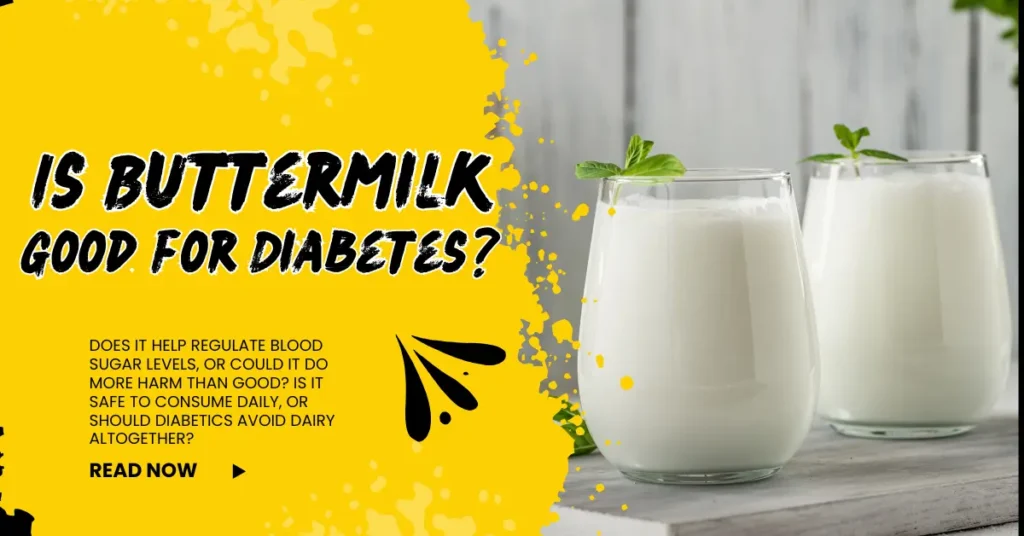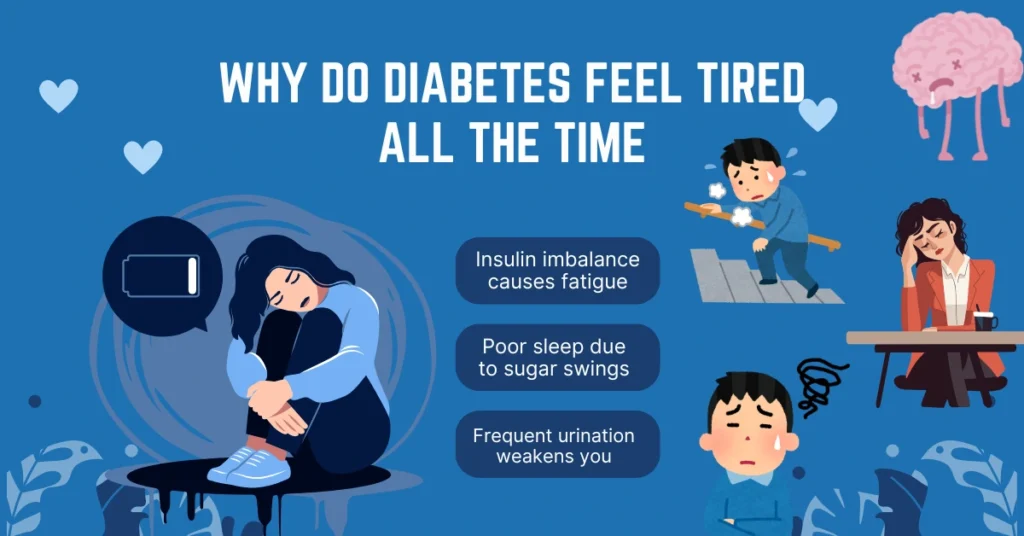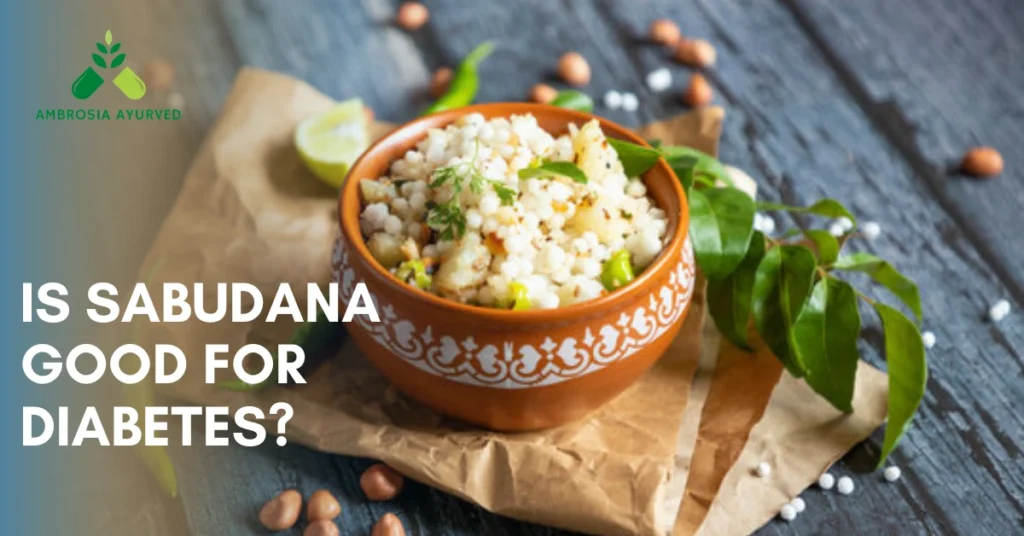Managing diabetes isn’t just about avoiding sugar — it’s about making smarter choices every day. One of the most common dilemmas people with diabetes face is about what to include in their daily diet — especially drinks. While some options are clearly off-limits, others fall into a confusing gray area. Buttermilk is one of them.
Often seen as a humble, refreshing drink in many households, buttermilk is traditionally consumed after meals, during hot summers, or as part of a balanced diet. But when it comes to diabetes, the question becomes more specific: Is buttermilk good for diabetes?
Does it help regulate blood sugar levels, or could it do more harm than good? Is it safe to consume daily, or should diabetics avoid dairy altogether?
What is Buttermilk?
Buttermilk isn’t just another dairy drink — it has a story of its own. Traditionally, buttermilk was the liquid left behind after churning butter from cultured cream. It was tangy, slightly sour, and packed with probiotics. Over time, especially in urban settings, what we call “buttermilk” today is usually a diluted version of curd (yogurt), mixed with water and sometimes seasoned with herbs or spices.
Despite its humble image, buttermilk is nutritionally rich. It contains essential nutrients like calcium, potassium, vitamin B12, and beneficial bacteria that support digestion. Importantly, it’s low in fat and has a naturally cooling effect on the body.
What makes buttermilk stand out is that it’s light on the stomach, hydrating, and often easier to digest than plain milk — especially for people who struggle with heavy dairy. This is part of the reason why so many nutritionists and dietitians consider it a better option for people with metabolic conditions like diabetes.
Before we get into the specific benefits, it’s important to understand how buttermilk interacts with blood sugar levels — and whether it really supports a diabetic diet.
Buttermilk and Diabetes: The Connection
Now to the real question — is buttermilk good for diabetes? To answer that, we need to look at how it affects blood sugar, digestion, and overall metabolism.
🔹 Low Glycemic Index (GI)
One of the key reasons buttermilk works well for diabetics is its low glycemic index. Foods with a low GI release glucose into the bloodstream slowly, preventing sudden spikes in blood sugar. Buttermilk typically has a GI of around 35–40, which is considered low. That makes it a safer beverage choice compared to sugary drinks or high-carb snacks.
🔹 High Satiety Value
Buttermilk is rich in protein and contains a good amount of fluid. This combination helps you feel full for longer, reducing the urge to snack unnecessarily — something that can be a major issue for people managing diabetes. Feeling satisfied after meals also contributes to better portion control.
🔹 Supports Healthy Digestion
While it doesn’t directly lower blood sugar, buttermilk can support better digestion through its probiotic content (especially in traditional or homemade versions). A healthy gut has been linked with better metabolic function, which in turn helps regulate blood sugar levels more efficiently.
🔹 Hydration and Electrolyte Balance
People with diabetes often experience dehydration or electrolyte imbalance due to frequent urination. Buttermilk, being a naturally hydrating drink, helps replenish fluids and provides minerals like potassium and calcium — both essential for nerve and muscle function.
In short, the answer to “is buttermilk good for diabetes?” leans toward yes — but only when consumed in the right way, which we’ll explore next.

Scientific Research and Medical Opinions
🔸 What Studies Suggest
Several small-scale studies and nutrition journals have highlighted the benefits of fermented dairy products in managing type 2 diabetes. A 2020 review published in Nutrients found that fermented dairy, like yogurt and buttermilk, may improve insulin sensitivity and support better glycemic control — mainly due to their probiotic content and anti-inflammatory properties.
While the exact impact of buttermilk on blood sugar isn’t as widely studied on its own, its low-fat, low-carb nature makes it a logical addition to a diabetes-friendly diet.
🔸 What Dietitians Say
Ask any qualified nutritionist, and you’ll hear a similar message:
“Buttermilk isn’t a magic solution, but it’s a smart choice when part of a balanced meal. It’s light, nutritious, and helps diabetics stay full without blood sugar spikes.”
Most dietitians recommend buttermilk after meals, especially lunch, as a way to improve digestion and reduce post-meal cravings.
🔸 It’s Not a Shortcut — It’s a Support
There’s no food or drink that can reverse diabetes on its own. But small, consistent dietary choices make a big difference. Buttermilk fits into this logic — not as a cure, but as a supportive tool in your routine.
So when asking, “Is buttermilk good for diabetes?”, science doesn’t say “yes” with a bold headline — but it does lean toward “yes, with context.”
Also Read – Is jaggery good for diabetes?
Benefits of Buttermilk for Diabetics
- Low Glycemic Index – Doesn’t spike blood sugar
- Boosts Satiety – Keeps you full, reduces cravings
- Good for Digestion – Supports gut health with probiotics
- Hydrating – Restores fluids and electrolytes
- Low in Calories – Helps with weight control
- Light & Easy to Digest – Suitable for sensitive stomachs
When and How to Consume Buttermilk Safely?
Picture this:
You’ve just had a light, homemade lunch — maybe some dal, roti, a small portion of rice. Instead of grabbing a soft drink or juice, you reach for a glass of chilled buttermilk. It’s refreshing, light, and you feel comfortably full afterward. That’s the right way to have it.
Best Time to Drink Buttermilk?
Midday — especially after lunch.
That’s when your digestive system is active, and buttermilk can aid digestion without interfering with blood sugar levels. Avoid drinking it first thing in the morning (on an empty stomach) or late at night.
⚠️ What to Avoid:
- Don’t add sugar, even a spoon can disrupt your blood sugar balance.
- Avoid packed/store-bought versions with preservatives or added flavors.
- Skip it if you’re lactose intolerant or have a sensitive gut.
💡 Pro Tips:
- Keep the buttermilk homemade or freshly prepared from curd.
- You can add a pinch of roasted cumin or fresh coriander, they improve digestion.
- Stick to 1 glass (around 200ml) per day, moderation always wins.
Who Should Avoid Buttermilk?
- Lactose Intolerant Individuals – Can cause bloating, cramps, or diarrh
- People with IBS or Gut Sensitivity – May trigger symptoms
- Those with Severe Dairy Allergies – Risk of allergic reactions
- People on Dairy-Free or Ketogenic Diets – Doesn’t fit dietary rules
- Anyone with Doctor-Recommended Restrictions – Follow medical advice first
Final Words
Yes — when used right, buttermilk is good for diabetes.
It’s low in sugar, low in fat, and has a cooling, hydrating effect. Its probiotic content supports digestion, and its low glycemic index makes it safe for blood sugar control.
But it’s not a “cure.” It works best when paired with a healthy diet, smart portioning, and medical guidance. One glass a day, especially after lunch, can be a smart addition to a diabetic lifestyle.
FAQ
Can diabetics drink buttermilk daily?
Yes, one glass of plain, unsweetened buttermilk per day is generally safe and beneficial — especially when consumed after meals.
Does buttermilk raise blood sugar?
No, buttermilk has a low glycemic index and doesn’t cause sudden spikes in blood sugar when taken in moderation.
What is the best time to drink buttermilk for diabetes?
After lunch is ideal. It helps digestion and keeps you full, reducing unnecessary snacking.
Is buttermilk better than curd for diabetes?
Both are good, but buttermilk is lighter, lower in fat, and easier to digest — making it a better option for many diabetics.




